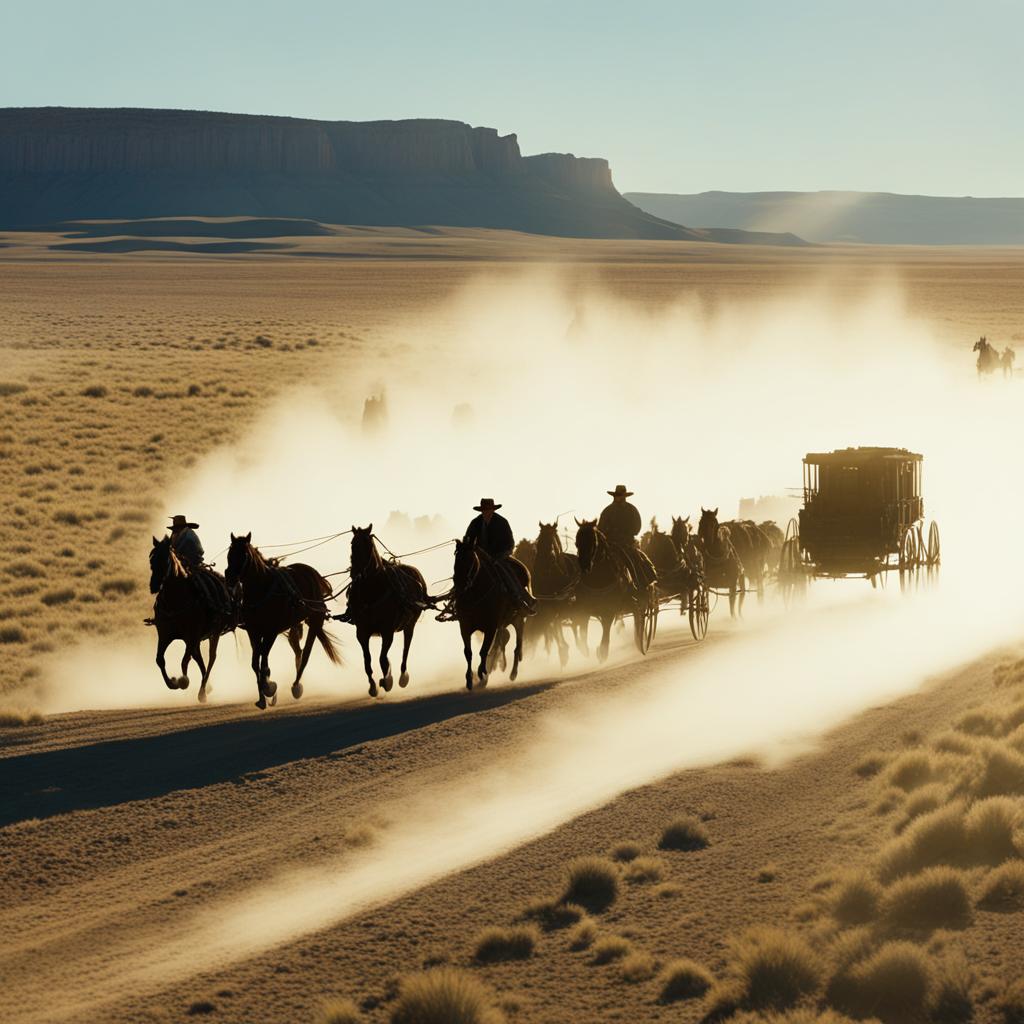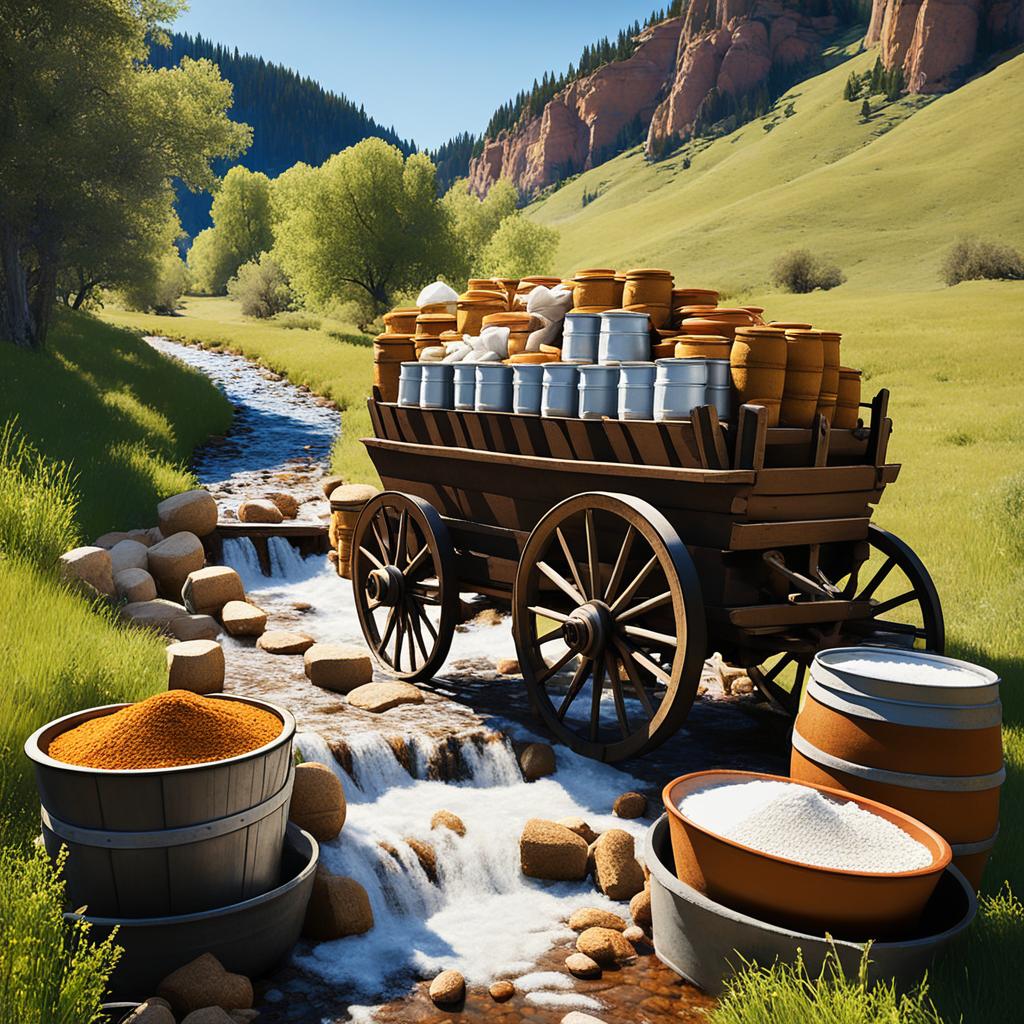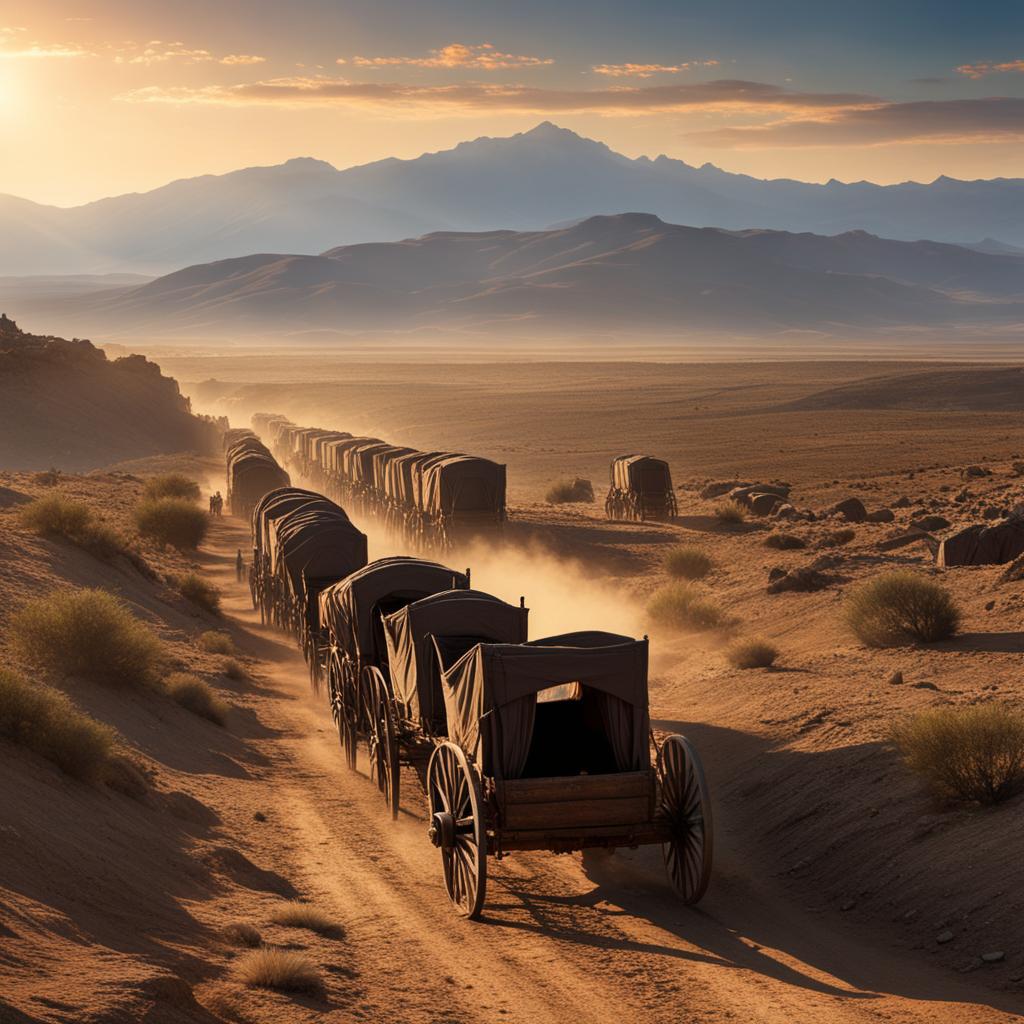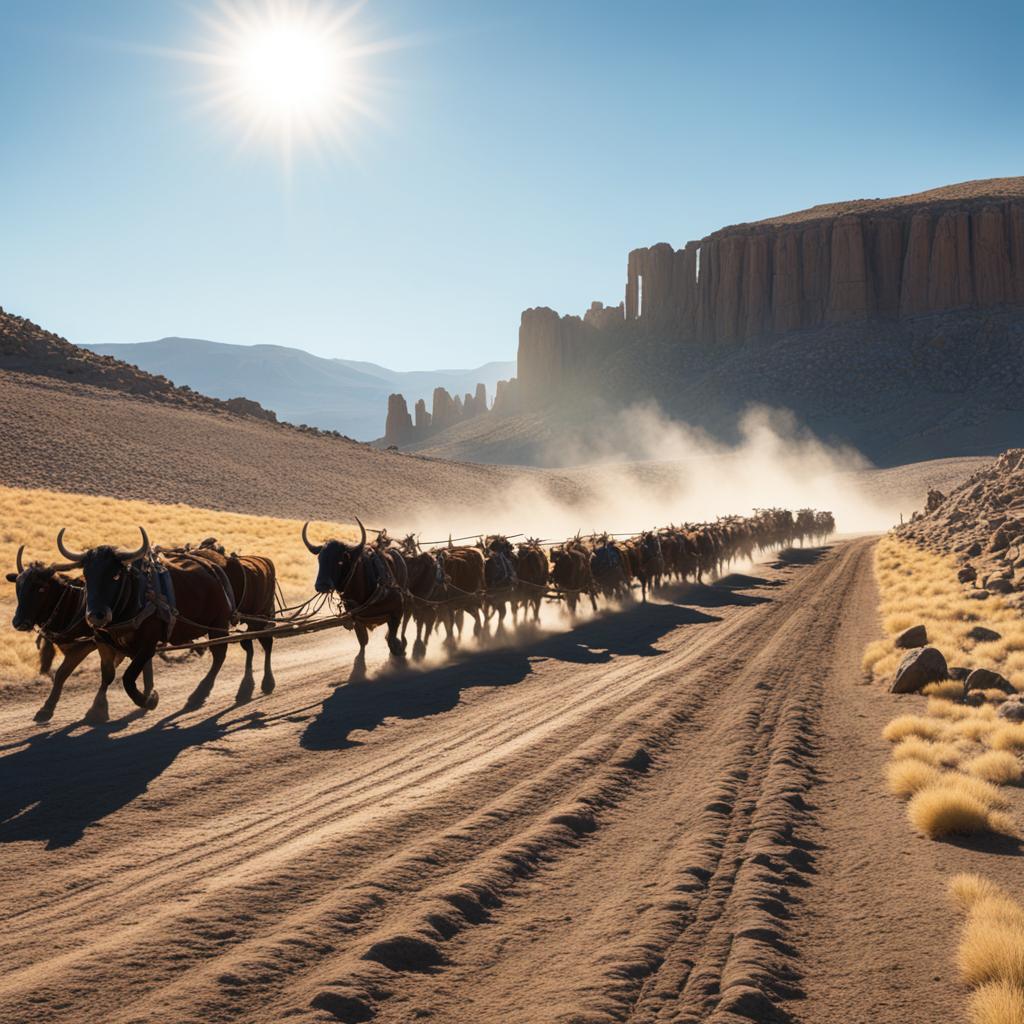Imagine embarking on a journey across the vast American West, with nothing but a wagon train and your determination. The pioneers of the 19th century faced numerous hardships and challenges as they traveled to their new homes in Oregon and California. But how far did they actually travel each day? Was it a grueling marathon or a leisurely stroll? Let’s explore the daily progress and travel distance of these brave pioneers.
The pioneers typically traveled 12 to 15 miles per day during their journey across the American West. This may seem like a relatively short distance considering the vastness of the frontier they had to conquer. So, why did they not travel farther? What factors influenced their daily progress? Join us as we delve into the remarkable routines, challenges, and legacies of these intrepid travelers. Get ready to step back in time and uncover the untold stories of the pioneers who shaped the American West.
A Typical Day on the Trail

When embarking on the long and arduous journey westward, pioneers followed a structured daily routine to ensure progress and maintain a sense of order. Let’s take a closer look at what a typical day on the trail entailed.
- 4 am: Wake-Up Call
- 5 am: Breakfast and Animal Gathering
- 6 am: Hitching the Wagons
- 7 am: Wagons Roll
- All Day: Traveling and Meal Time
- Around 6 pm: Camp Setup
- Evening: Campfires and Dinner
As the sun started to rise over the horizon, a wake-up call echoed through the camp, signaling the start of a new day. Pioneers would rouse from their sleeping quarters, eager to face the challenges that awaited them.
The smell of freshly brewed coffee filled the air as preparations for breakfast began. Pioneers would start their day with a hearty meal, usually consisting of bacon, beans, bread, and coffee. At the same time, they would gather their animals and ensure they were ready for the day’s journey.
By 6 am, the wagons were hitched and prepared for departure. Families would ensure that their belongings were securely packed, ready to withstand the challenges of the trail. This was also the time when final checks were made to ensure everything was in order.
With a resounding shout from the wagonmaster, “Wagons roll!”, the pioneers set off on their daily journey. The wagon train, consisting of multiple families and individuals, moved forward, following the trail that lay ahead.
The pioneers traveled steadily throughout the day, enduring long hours on the trail. They would take occasional breaks to rest, stretch their legs, and give the animals a chance to graze. An hour-long break for lunch, known as “nooning,” was a welcomed pause during the midday heat.
As evening approached, the pioneers would search for a suitable location to make camp. With the arrival of dusk, the wagons were circled to form a protective corral, safeguarding the livestock and providing security for the night. This practice, known as “wagons circled,” became a common sight along the trails.
As the sun dipped below the horizon, campfires were lit, illuminating the campsite and providing warmth. Cooking utensils clanked as dinner was prepared, often consisting of stews, roasted meat, and vegetables. The pioneers would gather around the campfires, sharing stories and enjoying a much-needed meal after a long day’s journey.
Supplies for the Journey

The pioneers needed a wide range of supplies for their journey west. The Emigrant’s Guide, published in 1849, suggested the following supplies for three people traveling on the Oregon Trail:
- Food: Flour, bacon, coffee, sugar, dried fruit, and salt
- Tools and Equipment: Plows, shovels, carpentry tools, and ropes
- Cooking Utensils: Ovens, skillets, and kettles
- Seeds: Corn and wheat for crops
- Weapons: Rifles and knives
- Clothing: Coats, pants, shirts, socks, and hats
- Bedding and Tents: Blankets and poles
- Miscellaneous Items: Surgical instruments, lanterns, and toiletries
The cost of obtaining these supplies in 1850 ranged from $800 to $1,200, equivalent to $26,700 to $40,000 in today’s dollars.
| Supplies | Quantity |
|---|---|
| Food | Enough for the entire journey |
| Tools and Equipment | Essential for various tasks |
| Cooking Utensils | Used to prepare meals |
| Seeds | For planting crops along the way |
| Weapons | Provided protection and hunting capabilities |
| Clothing | Appropriate attire for different weather conditions |
| Bedding and Tents | Provided shelter and comfort at night |
| Miscellaneous Items | For various needs and emergencies |
Challenges and Setbacks on the Trail

The pioneers encountered numerous challenges and setbacks while traveling on the trail. These obstacles tested their resilience and determination to reach their destination. Here are some of the challenges they faced:
Trail Conditions
The rough conditions of the trails posed a major challenge for the pioneers. Most trails were little more than dirt paths, making travel slow and difficult. Ruts, potholes, and uneven surfaces made navigation and progress laborious, requiring constant vigilance to avoid accidents and mishaps.
Weather Obstacles
The pioneers had to contend with various weather obstacles that could significantly impact their journey. Lack of grass for livestock posed a threat to their animals’ well-being and limited their ability to travel long distances. Mountain snows, thunderstorms, and high winds could bring travel to a halt, forcing the pioneers to seek shelter until conditions improved.
Broken Axles
Rutted trails often caused broken axles, which were a major problem for the pioneers. A broken axle could lead to a wagon becoming immobile, delaying the entire party and potentially straining supplies. To mitigate this risk, many emigrants carried spare axles and other essential wagon parts.
Toll Bridges
As the pioneers encountered rivers and streams, they often had to navigate toll bridges. These bridges were usually made of wood and required a fee to cross. The cost of crossing toll bridges could be expensive, adding to the financial burden of the journey. Some pioneers had to construct their own makeshift ferries or find alternative crossing points to avoid tolls.
Delays
Delays were a common occurrence on the trail for various reasons. Flooding caused by heavy rain could render rivers and streams unfordable, forcing the pioneers to wait until the waters receded or find alternative routes. Such delays not only stretched out the journey but also put a strain on supplies and tested the pioneers’ patience.
Despite these challenges and setbacks, the pioneers persevered, often relying on ingenuity and cooperation to overcome obstacles along the trail. Their determination played a vital role in the westward expansion of the United States and left a lasting legacy on the nation’s history.
Impact and Legacy of Pioneer Travel
The overland journey made by the pioneers had a significant impact on the settlement and development of the American West. The idea of Manifest Destiny, the belief in American expansion, fueled the desire for people to venture west. The journey itself became a defining experience for the pioneers, shaping their lives and the lives of those who followed them.
Guidebooks played a crucial role in facilitating the journey, providing practical information for the pioneers. These guidebooks offered valuable insights into distances, road conditions, and recommended provisions, helping the travelers navigate the challenges they encountered along the way. By following the advice of these guidebooks, pioneers were able to make informed decisions and increase their chances of a successful journey.
Group travel was also a common practice during this time. Wagon companies were often formed by families, friends, or people from the same locality. This allowed the pioneers to travel together, providing them with a sense of community and support. It also ensured a safer and more cohesive journey, as they could rely on one another for assistance and protection.
The pioneers’ journey to Oregon and California paved the way for the settlement and unification of the country. Their brave and determined spirit, along with the legacy of Manifest Destiny, shaped the future of the American West and contributed to its rapid growth and development. Their stories continue to inspire generations, reminding us of the resilience and tenacity required to conquer new frontiers and build a nation.


